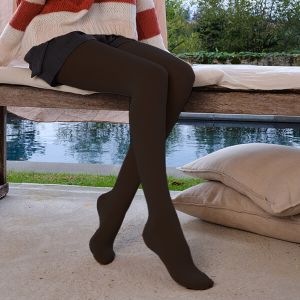What exercises are recommended for varicose veins and which are better avoided?

Contrary to popular belief, varicose veins are not just an aesthetic issue. It's true that characteristically curled veins don't look particularly nice, but first and foremost it's a health problem and it affects the whole body. It proves inefficient circulation of lower limbs and venous valves. This causes blood that should go back to the heart to create stagnation in the legs, stretching the veins.
Interestingly, many factors that eliminate this problem or reduce the risk of developing it can be successfully prevented. One of the ways to prevent, but also to treat, are exercises for varicose veins. In general, physical activity in this case is our ally.
Varicose veins - how do they arise and what are the symptoms?
Varicose veins usually have a big connection with genetic load. If our parents or grandparents had this problem, there is a good chance that it will also appear in us. Circulatory insufficiency caused by venous valves not working properly, however, is more common when additional factors are involved.
These include prolonged standing in one position (e.g. standing or sitting at work), sedentary lifestyle, obesity, pregnancy, wearing tight clothes and poor diet, and stimulants such as cigarettes or alcohol.
Eliminating these factors is one answer to how to combat and prevent leg varicose veins. It may seem that varicose vein is a symptom in itself. This is not entirely true, because even before the first vein appears under the skin, we can observe alarming signals that should not be ignored.
These include for example the feeling of tiredness, heaviness and numbness of legs as well as their pain located in accordance with the course of veins. A characteristic symptom is also swelling accumulated around ankles, but also increased skin tension or calf cramps intensifying at night.
How to treat varicose veins?
Depending on the severity of the problem, the doctor may prescribe different types of therapy - from pharmacological, through compression, to surgical. In case of pharmacological therapy, the basis will be products rich in ingredients strengthening the walls of blood vessels: rutoside, diosmin or horse chestnut extract. Compression treatment involves the use of special compression garments, such as varicose vein tights.
It can also be used prophylactically, which is recommended e.g. for pregnant women. Surgical treatment, on the other hand, usually includes sclerotherapy and laser vessel closure. Fortunately, there are also natural treatments for leg varicose veins.
What is good for varicose veins? Exercise and more
Once a vein is stretched by accumulated blood, unfortunately it will stay that way. Not much can be done about it except surgical removal of varicose veins. However, a lot can be done to stop the progression of the problem and appearance of further signs.
When considering what helps with varicose veins, it is worth considering exercise. It is not really about strenuous training, but rather light gymnastics, which largely includes exercises that force the legs to move in the air. This will include, for example, bicycling, scissors, leg bending and straightening while lying down, as well as marching in place with a high leg lift or toe climbing.
We can even do foot circles while working or traveling long distances. At work, we can also do alternating knee raises, drawing the feet to the buttocks, straightening and bending the legs at the knees. This simple solution will improve blood circulation, reduce blood stasis and help reduce swelling and even leg pain or heaviness.
It is best to do these exercises every day and end the training with a cool, stimulating shower. It is also worth finding time every day for a walk, cycling or even swimming. Movement stimulates the so-called muscle pump, but exercises cannot always be performed by people with very large varicose veins, thrombosis and superficial phlebitis. In this situation, a doctor should be consulted. Although movement and sports are advisable, in the case of venous insufficiency of the lower limbs, it is better to avoid exercises that heavily strain the legs.
Gymnastics is fine, but weightlifting exercises or hard presses at the gym are not. Natural remedies for varicose veins also include avoiding exposing legs to heat - whether in the bath or in summer, e.g. at the beach. High temperatures dilate blood vessels. It is also worth avoiding saunas. Another effective way to treat varicose veins is to change eating habits.
The point is to provide yourself with active ingredients strengthening the walls of blood vessels and having a positive effect on the circulatory system in general, but also to lose a few excess kilograms.
One of the factors most conducive to the formation of varicose veins is a greater strain on the body. This naturally applies to pregnant women, although in them this condition is short-lived, but also to obese people.



















